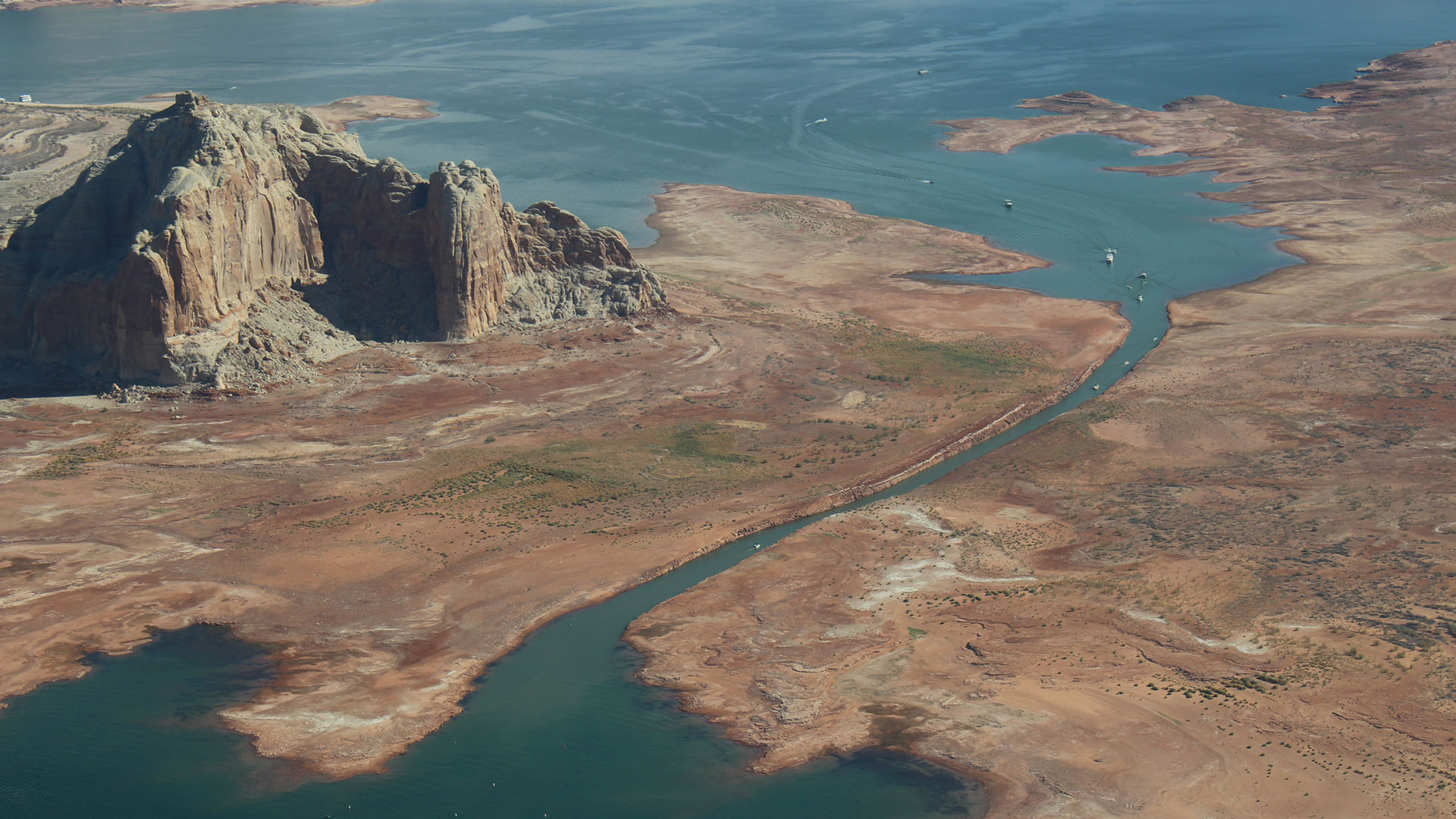 A narrow passageway allows boats to pass on the northern edge of Antelope Island in Lake Powell, one of the Colorado River's main reservoirs.
A narrow passageway allows boats to pass on the northern edge of Antelope Island in Lake Powell, one of the Colorado River's main reservoirs.
Key reservoirs along the Colorado River are collectively at their lowest point at the start of a new water year since the last one filled nearly 40 years ago.
As of Oct. 1 reservoirs that store the Colorado River’s water are at just under 47 percent of their capacity, according to recently released data from the U.S. Bureau of Reclamation. Put another way: Reservoirs that provide water to 40 million people and irrigate 5.5 million acres of farmland in the southwest are less than half full.
The previous low point for the river’s collective reservoir storage was recorded in 2004 after years of dry conditions within the southwestern watershed caused the combined storage to drop to 50 percent of capacity.
A water year is used by water managers to track snowpack and runoff on an annual basis. Each water year begins Oct. 1 and ends Sept. 30, meant to coincide with the arrival of snow in the Rocky Mountains. The vast majority of the Colorado River’s flow is provided by melting snow in the southern Rockies.
The combined storage figure takes into account the amount of water in 10 of the river’s reservoirs, many built as part of the Colorado River Storage Project:
- Fontenelle Reservoir, Wyoming
- Flaming Gorge Reservoir, Wyoming and Utah
- Blue Mesa Reservoir, Colorado
- Morrow Point Reservoir, Colorado
- Crystal Reservoir, Colorado
- Navajo Reservoir, New Mexico and Colorado
- Lake Powell, Utah and Arizona
- Lake Mead, Nevada and Arizona
- Lake Mohave, Nevada and Arizona
- Lake Havasu, California and Arizona
Dry weather and warm temperatures have reduced the amount of water flowing into these reservoirs. But the Colorado River is also overallocated, where more water has been promised to farmers and cities than actually exists in reality. Year-to-year demands for the river’s water consistently outstrip the supply.
Water managers throughout the seven states that rely on the river are currently trying to sell cities, farmers and tribal leaders on so-called drought contingency plans, which are meant to cajole water users to conserve more and fill the river’s reservoirs. Federal officials have given state leaders an end of year deadline to finish those plans.
This story is part of a project covering the Colorado River, produced by KUNC and supported through a Walton Family Foundation grant. KUNC is solely responsible for its editorial content.

By submitting your comments, you hereby give AZPM the right to post your comments and potentially use them in any other form of media operated by this institution.